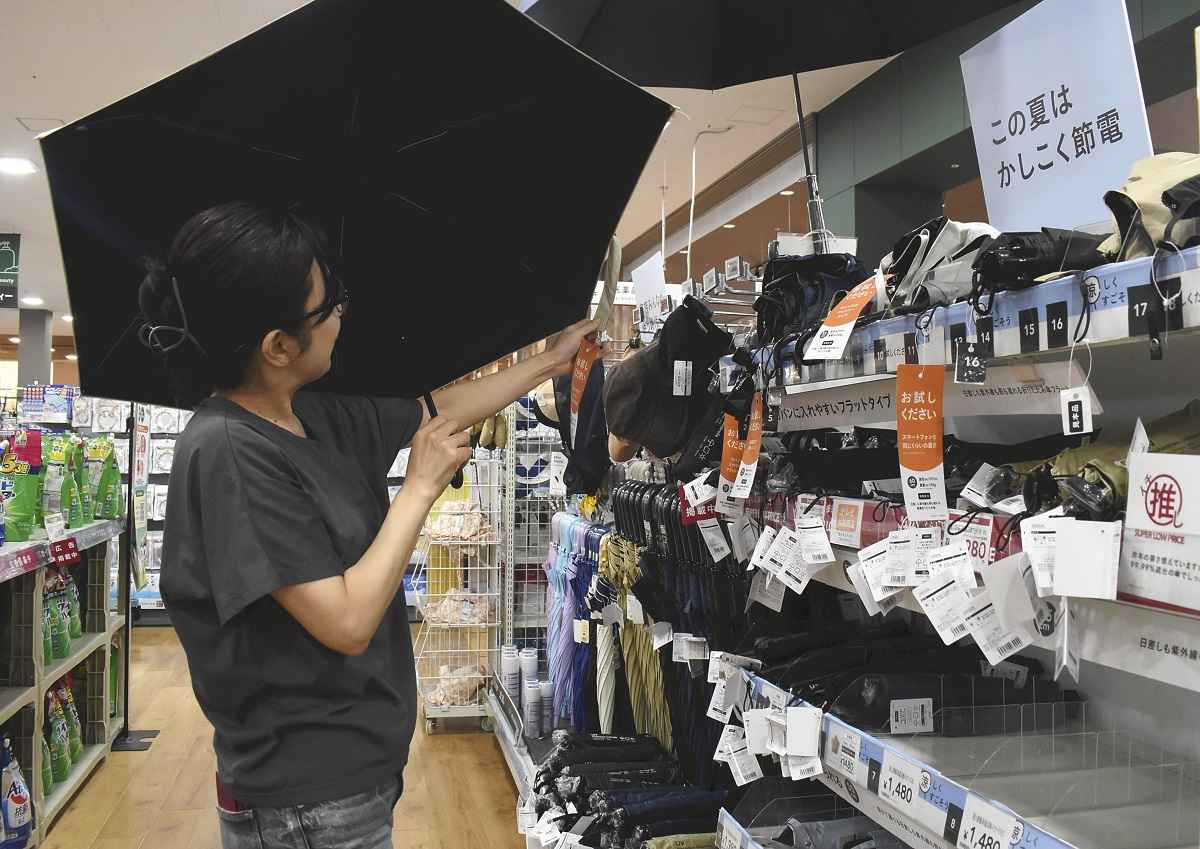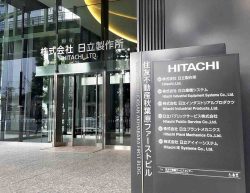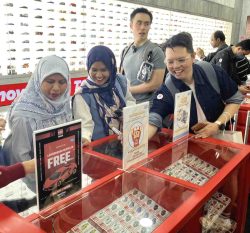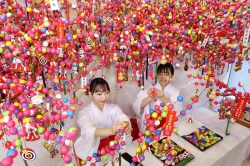Summer Sales Heat Up with Hotter Temperatures; Consumers Buy Up Portable Air Conditioners, Parasols

Light weight, folding-type umbrellas that can also be used as parasols are gaining popularity at a store in Asaka, Saitama Prefecture.
16:30 JST, August 20, 2024
The summer shopping season is reaching its peak amid scorching daily temperatures. In addition to strong sales of such items as beer and ice cream, sales of products that help keep you cool have been higher than usual. In recent years, retailers have been trying to adapt sales strategies to cope with the heat, which is expected to continue into autumn.
Increasing airflow
Portable air conditioners, or spot coolers, are one of the hottest-selling items this summer, as they are easy to use and do not require installation.
Sales of portable air conditioners at Cainz hardware stores increased by 26% in July from the same period last year. It is believed they are typically used in as kitchens and dressing rooms, where air conditioners are normally not installed.
Cainz also saw sales of umbrellas that can double as parasols increase about 250%, with sales of those marketed to men increasing about 300%. “Heat waves in recent years have changed consumer behavior,” a Cainz official said.
At Don Quijote discount stores, powerful electric fans from its Strong Fan Series are taking off, with sales from April to July up 130% from the same period last year.
Standard summer staples are also selling well. Kirin Brewery Co. increased its production plan for its mainstay Kirin Ichiban beer by about 10% from the previous year in July and August.
At FamilyMart convenience stores, sales of body wipes in the first week of July were up 150% from the previous year.
Extreme heat to continue
Some businesses are changing their sales tactics in response to the heat.
Sanyo Shokai Ltd., a major apparel company, extended its summer sales season from the previous three months to five months, and divided the season into two: “early and mid-summer” from May to July, and “extreme heat” from August to September. During the early and mid-summer period, Sanyo Shokai mainly offered short sleeve items and washable jackets. In the latter period, Sanyo Shokai added items such as three-quarter sleeve blouses, which can still be worn in autumn. Given that the heat will not ease in September, the strategy is to extend its summer sales season and capture as much demand as possible for summer items.
The Matsuya Ginza department store began its summer sale drive on July 19, about three weeks later than usual, because it expects demand for summer items to continue into September. By pushing back the start of the period, the store can prolong the sale of summer items at regular prices without discounting them. “The move will lead to an increase in overall annual sales. We would like to continue to try out new approaches in the future, too,” a Matsuya Ginza official said.
Pools at night
Leisure facilities are also taking action. Yomiuriland amusement park has doubled the period of days for its “After Pass,” which offers a discount up to ¥2,900 on the adult admission fee, including the entrance fee for the swimming pool, after 3 p.m. The move seeks to create demand for the afternoon period, when visitor numbers slow down during peak heat hours, while at the same time attracting them to the pool at night.
As of Monday, there were 19 days with highs of 35 C or above this year in central Tokyo, keeping pace with last year, which saw the most such days on record. The intensity of the heat is expected to remain for some time.
According to an estimate by the Dai-ichi Life Research Institute, consumption increases as temperatures rise up to 35 C, but typically drops off when they exceed 35 C. This occurs because more and more people become reluctant to go out in excessive heat.
Takuya Hoshino, the institute’s chief economist, said, “While high prices and other factors are restricting consumer behavior, companies need to be mindful of a ‘too hot summer,’ which could cool down consumption.”
"Business" POPULAR ARTICLE
-

Keidanren Chairman Yoshinobu Tsutsui Visits Kashiwazaki-Kariwa Nuclear Power Plant; Inspects New Emergency Safety System
-

Imports of Rare Earths from China Facing Delays, May Be Caused by Deterioration of Japan-China Relations
-

University of Tokyo Professor Discusses Japanese Economic Security in Interview Ahead of Forum
-

Japan Pulls out of Vietnam Nuclear Project, Complicating Hanoi’s Power Plans
-

Govt Aims to Expand NISA Program Lineup, Abolish Age Restriction
JN ACCESS RANKING
-

Keidanren Chairman Yoshinobu Tsutsui Visits Kashiwazaki-Kariwa Nuclear Power Plant; Inspects New Emergency Safety System
-

Imports of Rare Earths from China Facing Delays, May Be Caused by Deterioration of Japan-China Relations
-

University of Tokyo Professor Discusses Japanese Economic Security in Interview Ahead of Forum
-

Japan Pulls out of Vietnam Nuclear Project, Complicating Hanoi’s Power Plans
-

Govt Aims to Expand NISA Program Lineup, Abolish Age Restriction

























